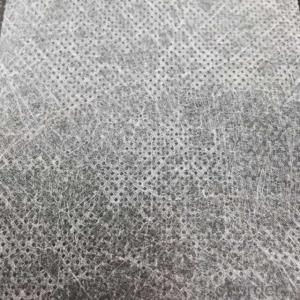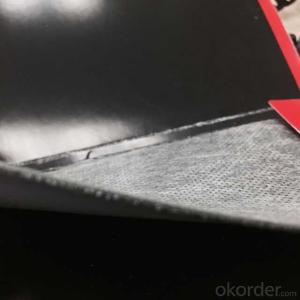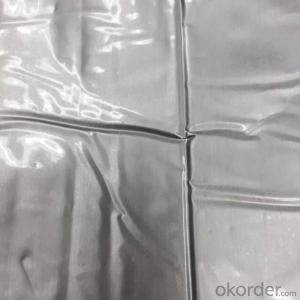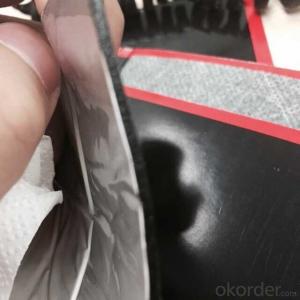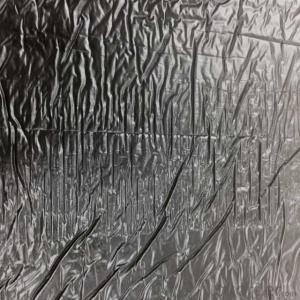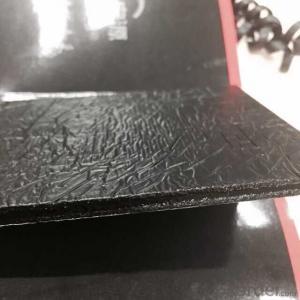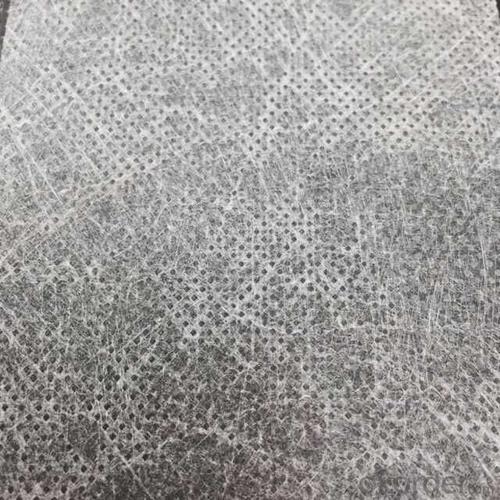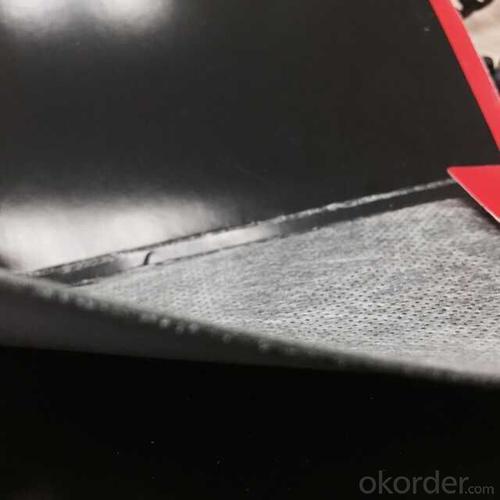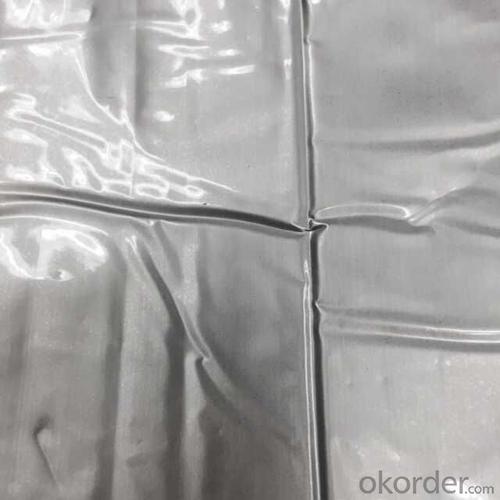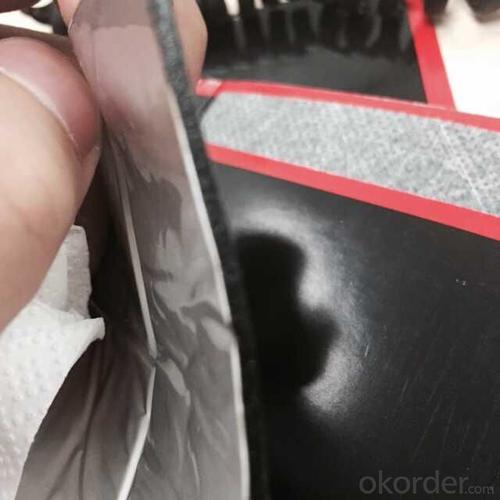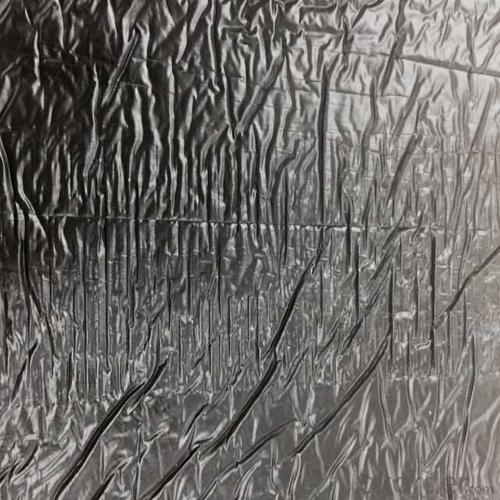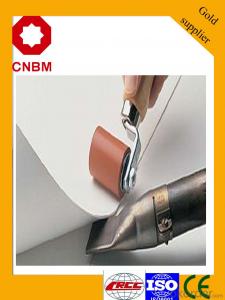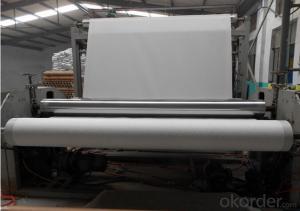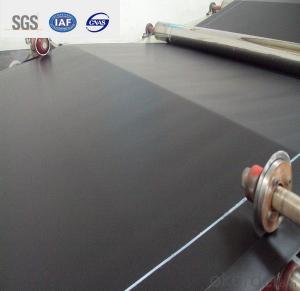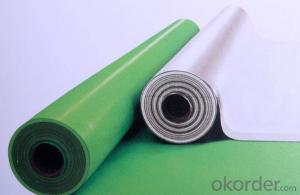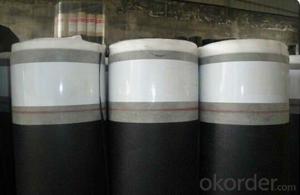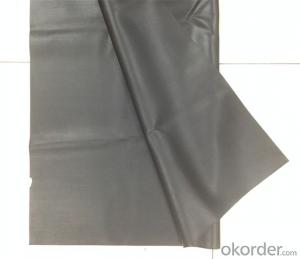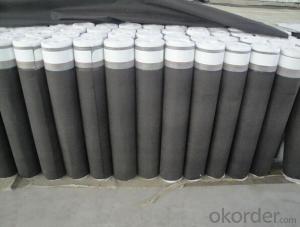Self-adhesive Waterproofing Membrane CMAX
- Loading Port:
- Qingdao
- Payment Terms:
- TT OR LC
- Min Order Qty:
- 2000 m²
- Supply Capability:
- 60000000 m²/month
OKorder Service Pledge
OKorder Financial Service
You Might Also Like
Specifications of Self-adhesive Waterproofing Membrane:
Self Adhesive Bitumen Waterproof Membrane
Introduction of Self-adhesive Waterproofing Membrane:
SBS(Styrene Butadiene Styrene) /APP (Atactic Polypropylene) modified bitumen membrane is made by saturating the base in bitumen, or thermoplastic elastomer (such as SBS, APP, APAO, APO), reinforced with polyester or fiberglass, finishing the upward face with polythene membrane, fine sands or mineral slates (or grains) or etc.
Specification of Self-adhesive Waterproofing Membrane:
Thickness | 3mm, 4mm, 5mm |
Width | 1m |
length | 7.5m, 10m, 15m, or on demand |
Base | Polyester or Fiberglass felt |
Surface | PE film, Aluminum foil, Yellow sand, Shale gravel(Schist), colored sand |
Type | could self-adhesive |
Notice | SBS modified bitumen membrane is specially applied in the cold district, APP modified bitumen membrane is more suitable for hot district with high temperature. could be self-adhesive modified bitumen membrane |
Applications:
-Roof and underground in industrial and civil buildings;
-Bridge, subway, tunnel, swimming pool, etc.
-Waste landfill, sewage plant, irrigation system, etc.
-Self-adhesive Modified Bitumen Waterproof Membrane
-Easy applying and economic on the cost saving
Advantage:
-Non-solidified, excellent elastic deformation,thus have good noise reducing;
-Easy applying and economic on the cost saving.
-Good performance on waterproof and economic sound damping.
Picture:
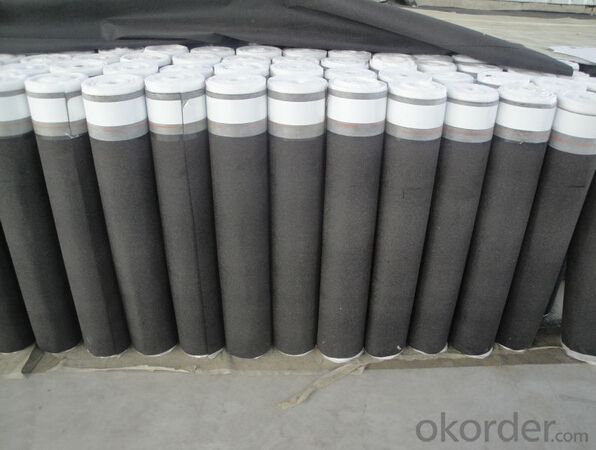
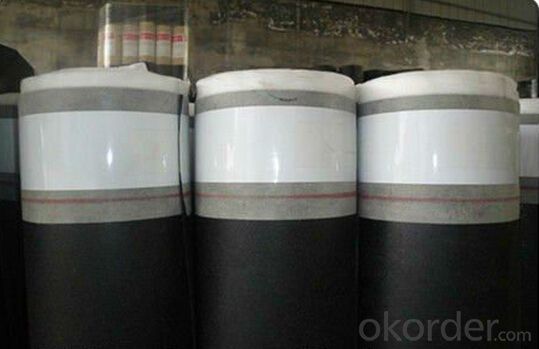
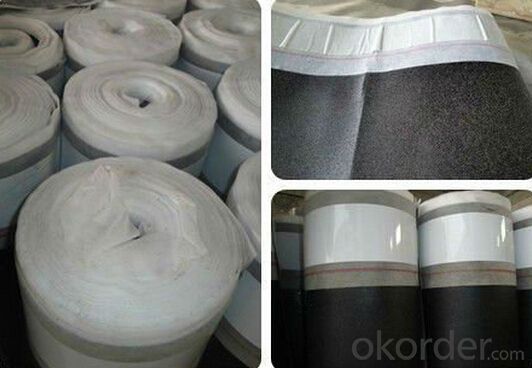
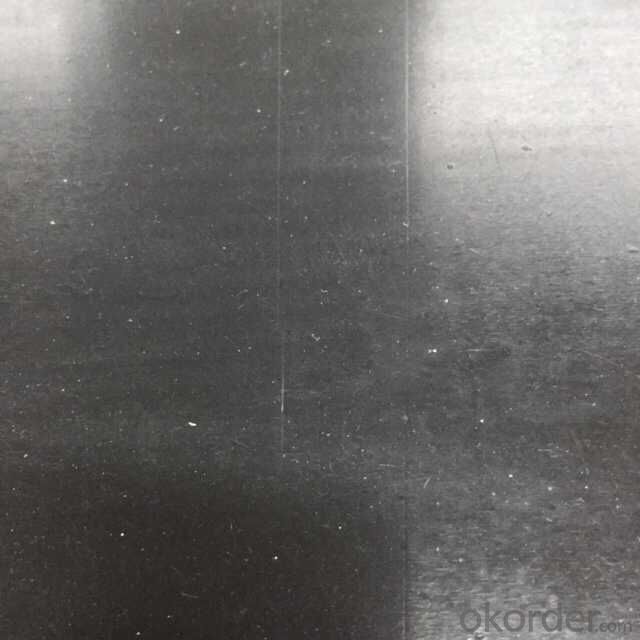
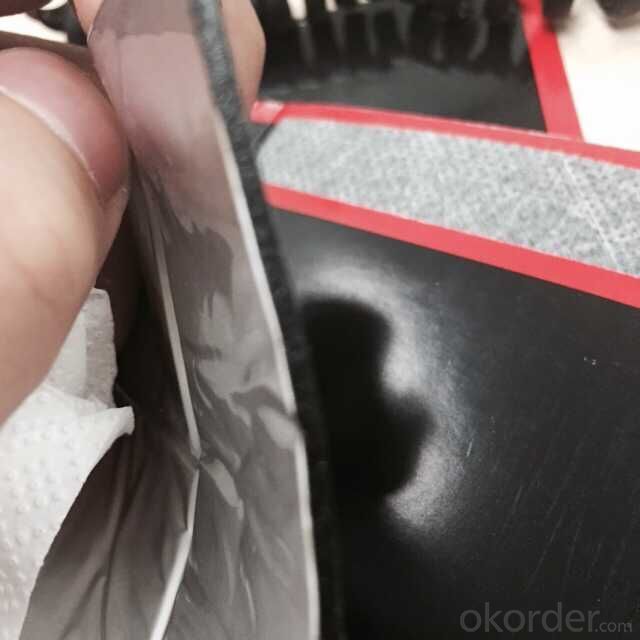
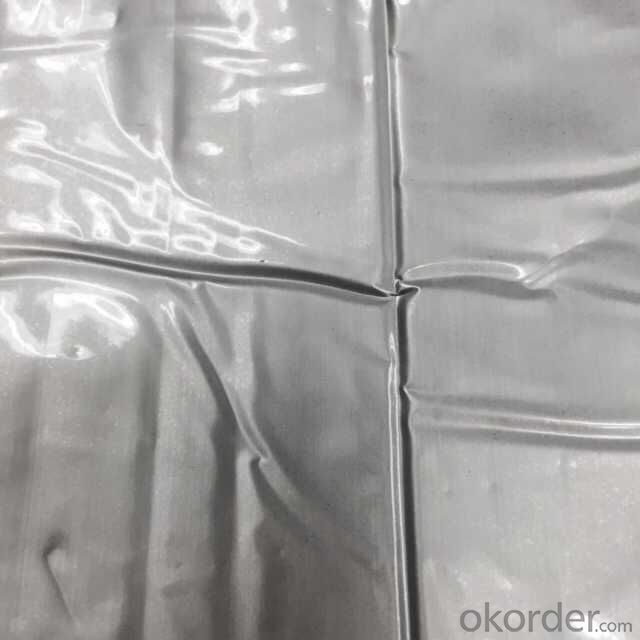
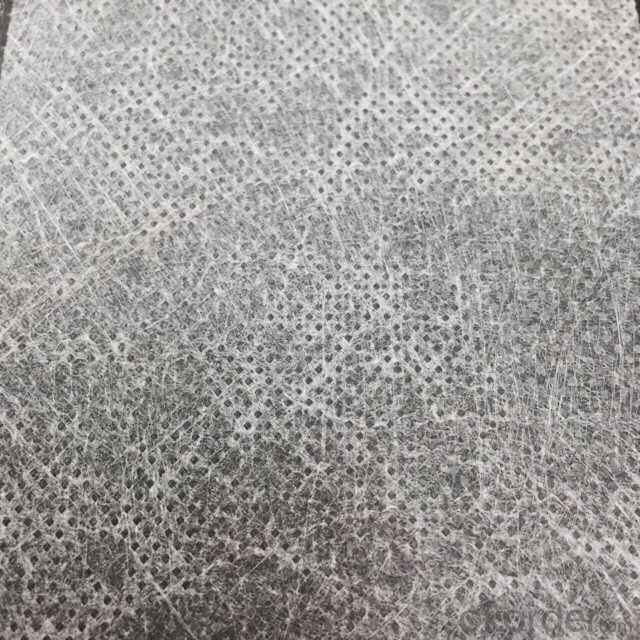
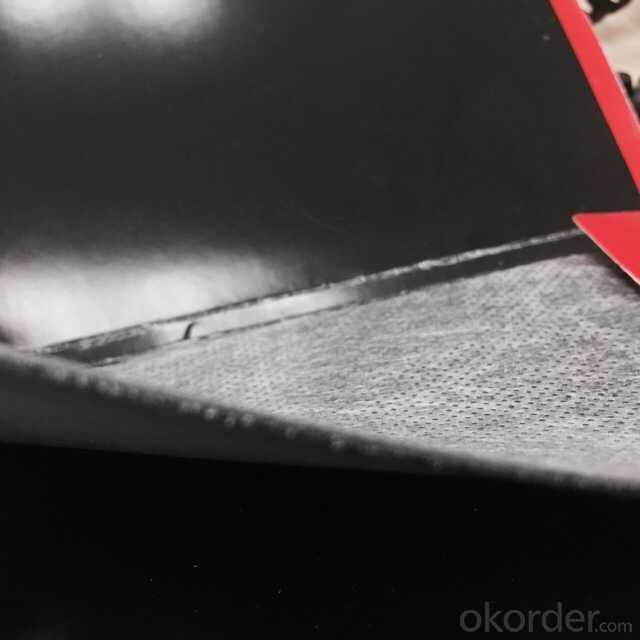
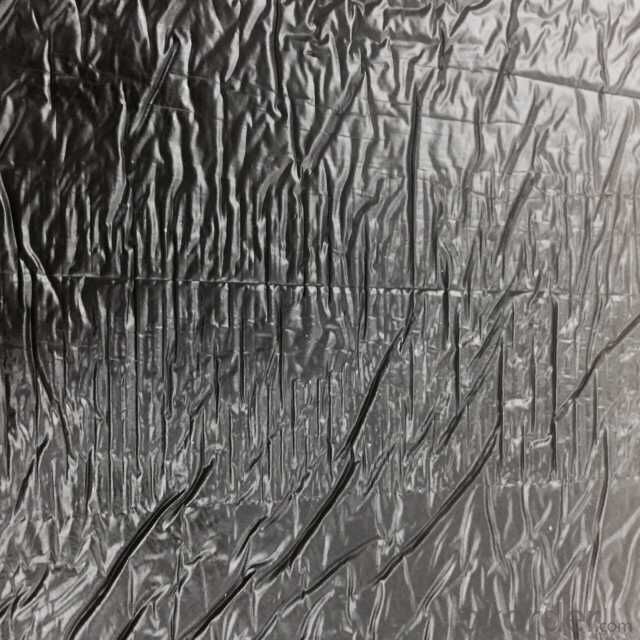
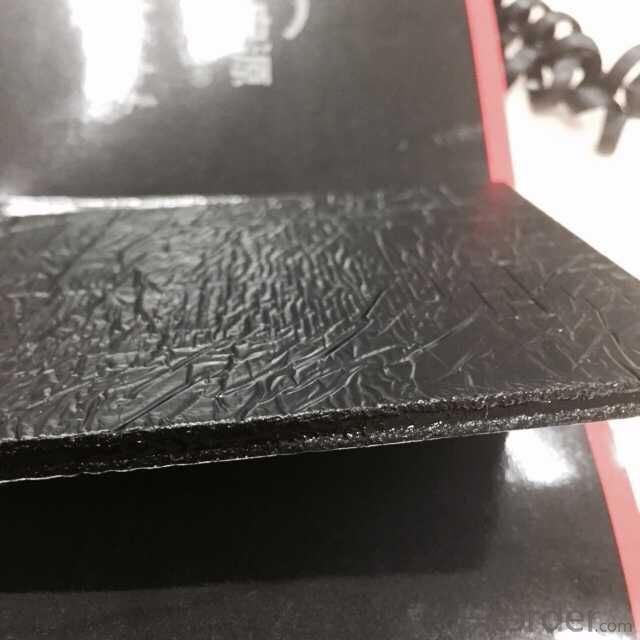
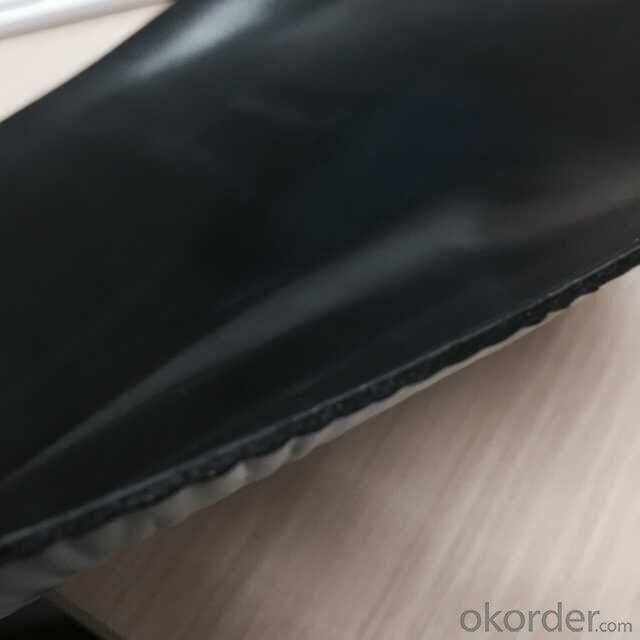
Storage of Self-adhesive Waterproofing Membrane:
Shelf life is 12 months. Store in a cool and dry place with original packing.
Breathable Waterproof Roof Underlay membrane (PP-PP,S-PP,S-S)
Permeable membrane is polymer modified asphalt based, with surface of high strength polypropylene fiber. Back side coated with self adhesive glue or antiskid sand. Made by special process. With excellent waterproof performance and breathable properties.\
Description | Specification | Width | Length | Thickness | |
Roof underlay | 500g/m2PP—PP | 1000mm | 30m | 0.8mm | |
600g/m2S—PP | 1000mm | 25m | 1.0mm | ||
1500g/m2S—S | 1000mm | 20m | 1.3mm | ||
Roof underlay with adhesive band | 500g/m2PP—PP | 1000mm | 30m | 0.8mm | |
600g/m2S—PP | 1000mm | 25m | 1.0mm | ||
1500g/m2S—S | 1000mm | 20m | 1.3mm | ||
It is used as the underlayment of cement tile, painted pottery watts and asphalt shingle. Also suitable for all kinds of architectural roofing, walls, underground waterproof and damp proof project.
Features of Self-adhesive Waterproofing Membrane:
It has good waterproofing and ageing-resistance function,not flowing at highest temperature and no crack at lowest temperature;
Easy application,no pollution,and long service life etc.
Usage of Self-adhesive Waterproofing Membrane:
It is widely used for industry and civil building --- the waterproof and dampproof of the roofs,basements,toilets etc;and the waterproofing of bridges,parking area,tunnels,reserviors etc.
It is specially suitable to the building waterproofing in cold area and to the buildings of changeable constructions.
Requirements for surroundings of Self-adhesive Waterproofing Membrane
-The base should be dry and clean. Do not work in the rainy or snowy day.
-Do not work under heavy wind(above 5 grade)
-Unsuitable for construction below 0°C
FAQ:
1. What are we supplying?
We are specialized in producing Colorful Asphalt Roof Shingle, SBS/APP modified bitumen waterproof membrane, Self adhesive bitumen waterproof membrane, PVC waterproofing membrane, EPDM rubber roofing membrane, Single Component Polyurethane Waterproof Coating, and Spray Polyurea Waterproof Coating
2. How Many years experience do we have?
We have been exported to more than 20 countries in the past 15 years.
3. How long do we usually reply your request?
We always reply our customer within 24 hours.
- Q: Coil waterproof roofing requirements
- 2, grass-roots moisture content of less than 9%, knife scratch marks white,
- Q: Can a waterproofing membrane be used in areas with extreme weather conditions, such as hurricanes or snowstorms?
- Areas with extreme weather conditions, such as hurricanes or snowstorms, can benefit from the use of a waterproofing membrane. These membranes are designed to create a protective barrier against water infiltration and can withstand various weather conditions effectively. They are made from moisture-resistant materials and can be installed in roofs, basements, or foundations. In regions prone to hurricanes, waterproofing membranes play a crucial role in preventing water damage. They create a barrier that keeps water out, even during heavy rainfall or storm surges. These membranes are often reinforced and possess high tensile strength to withstand the strong winds and pressure associated with hurricanes. Similarly, in areas experiencing heavy snowstorms, waterproofing membranes are valuable in preventing water intrusion caused by melting snow or ice dams. They are designed to be flexible and resistant to extreme temperatures, ensuring their integrity and leak prevention in freezing conditions. However, it is essential to select the appropriate type of waterproofing membrane for the specific weather conditions in the area. Different membranes offer varying levels of resistance to extreme weather, so consulting with a professional is advisable to determine the most suitable membrane for the climate and weather patterns. Additionally, proper installation and regular maintenance are crucial to ensure the longevity and effectiveness of the waterproofing system in extreme weather conditions.
- Q: Can a waterproofing membrane be used on fiberglass surfaces?
- Indeed, it is possible to utilize a waterproofing membrane on surfaces made of fiberglass. Fiberglass, being non-porous in nature, lacks the ability to absorb or retain water. Nonetheless, it remains vulnerable to water damage if not appropriately safeguarded. By applying a waterproofing membrane onto fiberglass surfaces, an additional barrier is established, thereby obstructing water infiltration and potential harm. This is particularly crucial in areas such as bathrooms, showers, or swimming pools, where fiberglass is commonly employed. The function of the waterproofing membrane is to serve as a safeguarding layer, assuring the preservation of dryness in the fiberglass and the prevention of any prospective water-related predicaments, including leakage, mold formation, or deterioration.
- Q: Can waterproofing membranes be used on roofs with slopes?
- Yes, waterproofing membranes can be used on roofs with slopes. These membranes are designed to provide a protective barrier against water infiltration and are commonly used on roofs with varying degrees of slope to prevent leaks and water damage.
- Q: Can a waterproofing membrane be used in swimming pools?
- Indeed, the utilization of a waterproofing membrane in swimming pools is widespread. To avert water leakage, it is a customary practice to incorporate waterproofing membranes during the construction or refurbishment of swimming pools. These membranes possess an exclusive design that enables them to function as a barrier against water infiltration, guaranteeing the pool's impermeability and leak-free condition. Typically, these membranes are crafted from robust materials like PVC, EPDM, or polyurethane, which exhibit resistance to water, chemicals, and UV rays. Furthermore, their flexibility allows them to effortlessly conform to the pool's shape and contours, providing a seamless and enduring waterproofing solution.
- Q: Does a waterproofing membrane require any special maintenance?
- Yes, a waterproofing membrane does require some special maintenance. It is important to regularly inspect the membrane for any damages or signs of wear and tear. Additionally, periodic cleaning and removal of debris is necessary to ensure its effectiveness. Proper drainage and regular resealing or reapplying of waterproofing coatings may also be needed to maintain the membrane's longevity and functionality.
- Q: Can a waterproofing membrane be used on precast stone block surfaces?
- Yes, a waterproofing membrane can be used on precast stone block surfaces. A waterproofing membrane is designed to provide a protective barrier against water infiltration, and it can be applied to various surfaces, including precast stone blocks, to prevent water damage and ensure the longevity of the structure.
- Q: Are waterproofing membranes flexible?
- Yes, waterproofing membranes are typically flexible. They are designed to be pliable so that they can conform to the shape and movement of the surfaces they are applied to. This flexibility allows the membranes to effectively seal gaps, cracks, and joints, preventing water from infiltrating into the underlying structure. Furthermore, the flexibility of waterproofing membranes also enables them to withstand the expansion and contraction that occurs due to temperature changes or structural movements. Overall, the flexibility of waterproofing membranes is a crucial characteristic that ensures their durability and effectiveness in protecting structures from water damage.
- Q: Can a waterproofing membrane be used on precast copper surfaces?
- Precast copper surfaces can indeed utilize a waterproofing membrane. These membranes possess adaptability and can be utilized across a diverse range of surfaces, including copper. Their primary purpose is to establish a protective barrier that hinders water infiltration and safeguards the underlying structure from moisture-induced harm. With accurate application, a waterproofing membrane can proficiently seal precast copper surfaces, securing enduring defense against water intrusion. Nevertheless, it is vital to verify the compatibility of the membrane with copper and conduct thorough surface preparation to guarantee optimal adhesion and performance.
- Q: Can waterproofing membranes be used in basements?
- Yes, waterproofing membranes can be used in basements. Waterproofing membranes are commonly used in basements to prevent water intrusion and dampness. By applying these membranes on the walls and floors of the basement, they create a barrier that prevents moisture from seeping into the basement, helping to keep the space dry and protected from water damage.
Send your message to us
Self-adhesive Waterproofing Membrane CMAX
- Loading Port:
- Qingdao
- Payment Terms:
- TT OR LC
- Min Order Qty:
- 2000 m²
- Supply Capability:
- 60000000 m²/month
OKorder Service Pledge
OKorder Financial Service
Similar products
Hot products
Hot Searches
Related keywords
